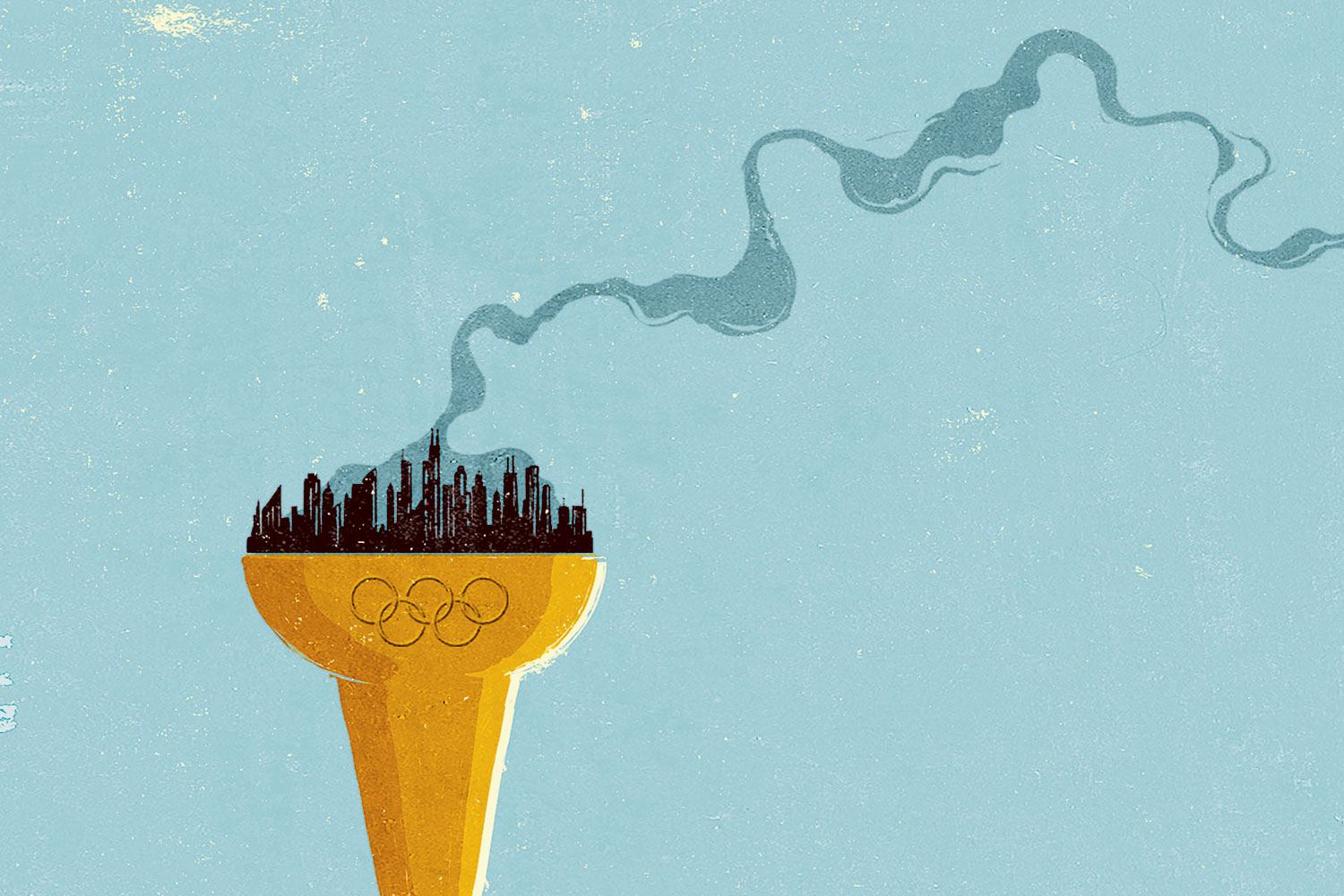Book 2 of Chicago’s proposal for the 2016 Olympics—part of a 540-page document that weighs in at seven pounds—begins with Daniel Burnham’s most famous quote: “Make no little plans …” (you know the rest). No little plans, indeed. Nearly seven years out from the failed effort, it’s hard to imagine the city building a billion-dollar Olympic Village in Douglas while basic services—namely, public schools and the police department—so desperately need cash infusions.
But back in those heady days, the Olympic bid committee wrangled support from big guns like President Obama and spent over $70 million on contractors, marketing, and six-digit executive bonuses in an attempt to lure the games. Had they actually arrived, the city’s first Olympics (it had made three previous bids) would have kicked off this Friday, at a perhaps overly optimistic estimated cost of $5 billion (figures for the games in Rio, which start August 5, aren’t available yet, but those in London cost about $14 billion), transforming swaths of the lakefront and South Side and infusing a projected $4.4 billion into the local economy (though opponents of the games doubted that figure, too).
Here’s a look back at what was promised in the bid—and what’s actually happened to those sites.
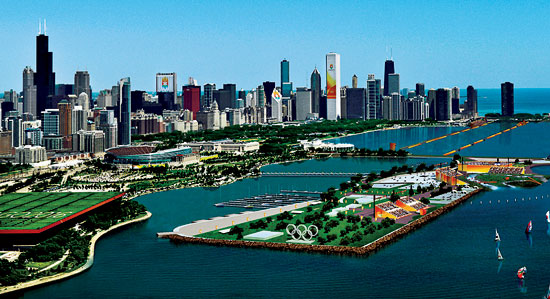
Northerly Island
The plan:The city’s manmade peninsula would have featured volleyball courts, a slalom course, and a sailing course from Burnham Harbor to the lake.
The reality:Good news: It’s still recreation friendly. Last September, the $9.7 million Northerly Island Park opened as a nature reserve with a five-acre lagoon and bike and walking trails. Bad news: Part of the trails closed in May because the lake was already eroding them.
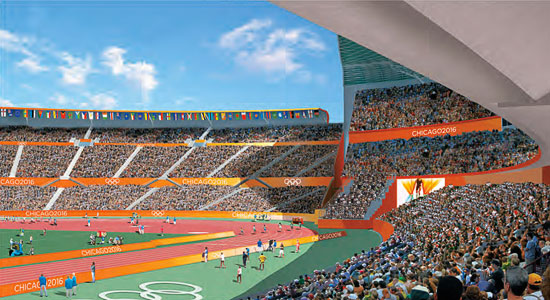
Washington and Jackson Parks
The plan:Opening and closing ceremonies and track events would have taken place in Washington Park at a new 80,000-seat stadium (to be downsized after the games into a venue for concerts and other events). Also slated for the area: aquatics in Washington Park and field hockey in Jackson Park.
The reality:One of the two parks will likely become the home of the Obama presidential library, which is expected to bring 800,000 visitors and more than $220 million annually to the city.
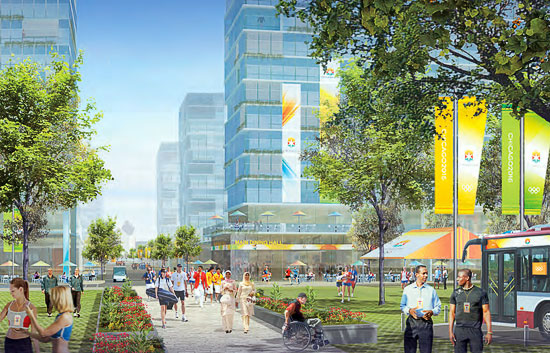
Michael Reese Hospital Site
The plan:An estimated 16,000 athletes would have bunked in the Olympic Village in the Douglas neighborhood. The committee promised in its plan that the site would eventually be converted into residences—30 percent of which would be affordable housing—“regardless of the outcome of the bid.”
The reality:Not that. So far, the old hospital has been turned into an empty lot. And the city is still paying off the $91 million loan it took out to buy the land in the Richard M. Daley era.
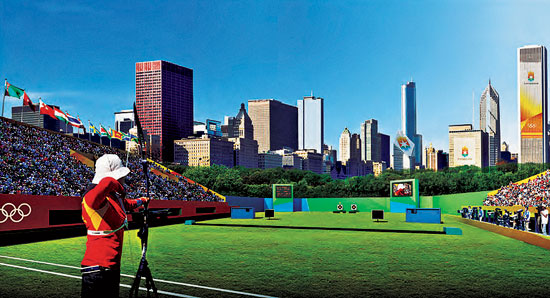
Grant Park
The plan:The Olympic Waterfront would have hosted archery at the site of Obama’s 2008 victory celebration, marathon racing along Columbus Drive, and rowing on the lake—in other words, an Olympic-size cluster jam. But none of the structures, like the bleacher seating along Columbus Drive and route markers for events, would have been permanent.
The reality:Grant Park’s former “bridge to nowhere” now leads to Maggie Daley Park, which has its own set of games: kid-friendly castles and play ships, a climbing wall, tennis courts, and, in winter, an ice-skating ribbon. Opened in 2014, it attracted more than 400,000 visitors in its first six months.
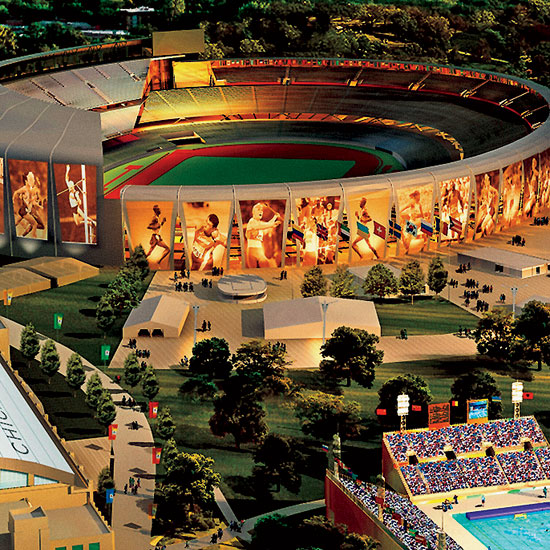
Douglas Park
The plan:The North Lawndale site would have hosted an array of sports, including cycling, basketball, and gymnastics. A velodrome, which would have cost roughly
$40 million, would have remained after the Olympics.
The reality:There’s no velodrome, but there is Riot Fest: The annual punk-music festival moved to Douglas Park in 2015 after it was kicked out of Humboldt Park.



